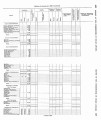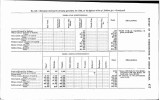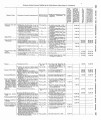| OCR Text |
Show 230 REPORT OF THE COMMISSIONER OF INDIAK AFFAIRS. whites, that the Indians were forced to hire land, for the use of which the past year t.hey are to pay one-third of the crop raised. . The west-ern Shoshones have almost no hunting nor fishjng, but they gather large quantities of nuts ,of the piiion tree, which they store for winter use. They number about one thousand. Tl~eG oship Shoshones.-These Indians are the poorest of the Shos-hone Indians in this superintendency. They are afraid of all surround-ing tribes, and it will be difficult to induce them to live on any reserva-. tion together with other Indians. They have cultivated several pieces of land during the past year, in all about twenty ancres. The small grain was destroyed by-grasshoppers, but they will have a tho~~sand bushels of potatoes. These Indians have very little hunting for furs or fishing, and trust in great measure for subsistence to the nut of the pifion tree and to rabbits, which abound in this Territory. They have few ponies, oxen, or cows. They live. in the western part of Utah, be-tween Great Salt Lake and the western boundary of the Territory, aud. number about eight hundred. The Northwestern, Western, and Goship Shoshones speak dialects of the Shoshonelanguage, and consider Washakee, of theEastern Shos-hones, as their principal chief. No land has.been designated as a reser-vation for these Indians, and the lands which they have cult,ivated were such as could be found unoccupied by whites, and capable of irri-gation. They were necessarily-small and detached pieces. I beg leaye to hope, most earnestly, that some location may be selected where these Indians may be brought together, where they may h a ~ e arable land, without continual danger of being crowded off by approach-ing whites. aud where. with reasonable assistance from the -go vernment. th:y may he encouraged to become self-supporting. The Weber Utes.-These Indians live in and about Salt Lake City. They have some ponies, and subsist by hunting, fishing and begging. They do not cultivate any land. The Weber Utes number about three hundred. The Timpanagos live south of Salt Lake City, in the vicinity of Span-ish Fork reservation. They number about five hundred. They subsist by hunting and fishing. The San Pitches ocou~vat erritorv south and east of the Timnanagos. Tbry uutiiber about tl!l.Ge huudretl,"part of milon! hare muvell ;~~,oll'iLt~ L-~n:itill;Vl allrg reserr:iriun, where thrg, with other Indiaus, cultivate -, souie land. The Pah-vents occupy the, territory in the vicinity of Oorn Creek reservation, and south of the Goship Shoshones. They number about twelve hundred. They have some ponies, but very little other stock. They have cultivated about fifteen acres the past year, and have raised about two hundred bushels of wheat. The Uintahs reside on the Uintah Valley reservation. They number about fifteen hundred. They have raised a large quantity of wheat, and are the best conditioned Indians in this superintendency. The deta~ls of their condition will appear in report of agent for Uintah Valley res-ervation. The report of the late agent for that reservation has already gone forward. The report of Lieutenant Graffam, the present agent, I have not yet received. . The Uintah Valley reservation occupies the finest part of this territory. The agency is, however, two hundred miles from this place, ?nd for six months of each year is wholly shut off from all commun~c~tiobuy impassable roads over the Wasatch Mountains. I have requested Lieu-tenant Graffam to ascertain if a road cannot be made up the Green River to strike the Uniod Pacific Railroad east of the Wasatoh Range. |



























































